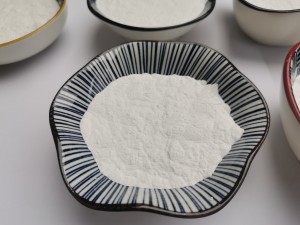
The microstructure characteristics of diatomite
The chemical composition of diatomaceous earth is mainly SiO2, but its structure is amorphous, that is, amorphous. This amorphous SiO2 is also called opal. In fact, it is a water-containing amorphous colloidal SiO2, which can be expressed as SiO2⋅nH2O. Because of the different production areas, the water content is different; the microstructure of diatomite samples is mainly related to the species of the deposited diatoms. Because of the different species of diatoms, the microscopic structure of the formed diatomite ore There are obvious differences in structure, so there are differences in performance. The following is a diatomite deposit formed mainly by terrestrial deposits in a certain place in our country that we have studied, and the diatoms are mainly linear.
Application of diatomite
Due to the unique microstructure of diatomite, it has a wide range of applications in many fields such as building materials, chemicals, agriculture, environmental protection, food, and high-tech. In Japan, 21% of diatomaceous earth is used in the building material industry, 11% is used in refractory materials, and 33% is used in carriers and fillers. At present, Japan has achieved good results in the development and application of new building materials.
In summary, the main applications of diatomite are:
(1) Use its microporous structure to prepare various filter aid materials and catalyst supports. This is one of the main uses of diatomaceous earth. It makes full use of the microstructure characteristics of diatomaceous earth. However, the diatomaceous earth ore used as a filter aid is preferably rich in corinosites, and the diatomaceous earth ore with a linear algae structure as a catalyst carrier is better because linear algae have a very large inner surface.
(2) Preparation of heat preservation and refractory materials. Among the thermal insulation materials below 900°C, diatomite thermal insulation refractory bricks are the most ideal choice, which is also one of the main application fields of diatomite mines in my country.
(3) Diatomaceous earth can be used as the main source of active SiO2. Since the SiO2 in diatomaceous earth is amorphous, it has high reactivity. For example, it is very ideal to use it to react with calcareous raw materials to prepare calcium silicate board fireproof materials. Of course, some impurities should be removed from low-grade diatomite ore.
(4) Use its microporous adsorption characteristics to prepare antibacterial and antifungal agents. This is also one of the new important applications of diatomite, which is a functional material with ecological effects. The length of the bacillus is generally 1-5um, the diameter of the cocci is 0.5-2um, and the pore size of diatomaceous earth is 0.5um, so the filter element made of diatomaceous earth can remove bacteria, if it is attached to the diatomaceous earth filter element Antibacterial agents and photosensitizers have better sterilization and bactericidal effects, and can be made into antibacterial agents and added to other materials to achieve the purpose of slow-release and long-term effects. Now, people can use high-tech means to prepare diatomaceous earth-type anti-mildew and antibacterial functional materials with diatomaceous earth as a carrier.
Post time: Sep-06-2021

